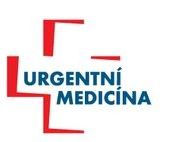INTRODUCTION
- Contents
- Editorial – Jana Šeblová
DIAGNOSTIC METHODS
- Usage of Point-of-Care ultrasonography by non-medical personnel in acute medicine – Roman Škulec, Jitka Callerová, Barbora Pakostová, Tomáš Pařízek
MEDICAL DEVICES
- Technological testing of image transmission from scene to Emergency Medical Dispatch – David Peřan, Jaroslav Pekara, Ondřej Franěk, Jakub Plíhal
PHYSIOLOGY AND EMERGENCY MEDICINE
- “Doctor, I can’t breathe!” – dyspnoea from the point of view of clinical physiology and how to evaluate the feeling of dyspnea – David Astapenko, Vladimír Černý
ETHICS, PSYCHOLOGY, LAW
- A pictogram tool as a language barrier solution in cross-border emergency medical service cooperation – Jakub Oliberius, Petr Kunášek, Eva Pfefferová, Stanislava Reichertová, Jan Kordík, Lukáš Bolek, Lukáš Štich, Josef Váně
CZECH RESUSCITATION COUNCIL NEWSLETTER
- Czech Resuscitation Council symposium „Resuscitace 2019“, 7th June 2019 – David Peřan, Jana Šeblová, Anatolij Truhlář
DISCUSSION, OPINION
- Statistics is a tricky thing: Let’s work with data carefully and interpret it very sensitively – Jan Havlík
- To Ing. Havlík´s paper – Ondřej Franěk, Jana Šeblová
INFORMATION
- Multidisciplinary cooperation in emergency care for people with inherited bleeding disorders in the Czech Republic – Jan Blatný, Martin Bohůn
- 15 years of „Pelhřimovský podvečer“ Congress – Tomáš Vaňatka
ABSTRACTS
USAGE OF POINT-OF-CARE ULTRASONOGRAPHY BY NON-MEDICAL PERSONNEL IN ACUTE MEDICINE
Roman Škulec, Jitka Callerová, Barbora Pakostová, Tomáš Pařízek
Abstract
Although the diagnostic use of Point-of-Care ultrasound has been reserved for physicians so far, there has been identified an effort for its qualified use by intensive and emergency care nurses in the Czech Republic and worldwide as well. In this article, the authors provide a literature review of accuracy of the Point-of-Care ultrasound examination performed by nurses and paramedics in different clinical setting and discuss the perspectives of this method in the Czech Republic.
Key words: ultrasound – nurse – paramedic
TECHNOLOGICAL TESTING OF IMAGE TRANSMISSION FROM SCENE TO EMERGENCY MEDICAL DISPATCH
David Peřan, Jaroslav Pekara, Ondřej Franěk, Jakub Plíhal
Abstract
Introduction: Technology represents the possibility of connection between the holder of smart glasses with the built-in camera and the workplace of a remote observer.
Method: Product testing was carried out at the Prague Emergency Medical Services. In the course of 2017, the inspector was involved in the documentation of situations with a greater number of persons affected, with the transmission of the situation to the Emergency Medical Dispatch. A questionnaire between users was used for evaluation.
Results: A total of 6 inspectors completed the questionnaire, i.e. 100 % of users of the technology during testing. Cronbach alpha (internal consistency of the questionnaire) was 0.819. The technical deficiencies identified include, but are not limited to, low battery capacity, fragile design, goggle-cable-phone connection often disrupted, and image quality dependence on the wearer’s speed of movement.
Conclusion: The device can be recommended for operation on emergency medical services and dispatch centres after technical deficiencies and limits have been resolved.
Key words: telemedicine – image transmission – Emergency Medical Dispatching
“DOCTOR, I CAN’T BREATHE!” – DYSPNOEA FROM THE POINT OF VIEW OF CLINICAL PHYSIOLOGY AND HOW TO EVALUATE THE FEELING OF DYSPNOEA
David Astapenko, Vladimír Černý
Abstract
Dyspnoea and respiratory system diseases are among the most common reasons for acute treatment both in the field and in an internal ambulance or general practitioner’s office. It arises from a combination of physiological, psychological, social and environmental factors and can represent mild to life-threatening states of nature. During the patient assessment, we must integrate the medical history, physical examination, and paraclinical auxiliary examinations, and we must be aware of life-threatening conditions until they are reliably excluded. The article summarizes this topic and focuses on acute global respiratory insufficiency – its pathophysiology, clinical evaluation and differential diagnosis.
Key words: hyperventilation – acute global respiratory insufficiency
A PICTOGRAM TOOL AS A LANGUAGE BARRIER SOLUTION IN CROSS-BORDER EMERGENCY MEDICAL SERVICE COOPERATION
Jakub Oliberius, Petr Kunášek, Eva Pfefferová, Stanislava Reichertová, Jan Kordík, Lukáš Bolek, Lukáš Štich, Josef Váně
Abstract
This article deals with the language barrier issue related to ambulance service and possibilities how to overcome it. However, communication between two medical professionals is crucial. The project: „The concept of coordination and realization of crossborder cooperation among emergency medical service workers“ (further referred to as Project no. 30) deals with cross-border cooperation issues between emergency medical services of the Czech Republic and Germany. We have established cooperation with this project in the field of communication. According to our findings, a suitable tool, that would help to overcome the language barrier in the interaction of medical professionals at the Czech-German border doesn´t exist. Therefore, we have decided to create such a tool to help to solve this problem. We have applied a combination of pictograms and translations for maximal utilisation of this tool in the pre-hospital emergency care.
Key words: communication – language barrier – pictograms – border area – prehospital medical care
STATISTICS IS A TRICKY THING: LET’S WORK WITH DATA CAREFULLY AND INTERPRET IT VERY SENSITIVELY
Jan Havlík
Abstract
The first issue of this year’s Emergency Medicine journal opened a discussion on the overuse of emergency services. The specific data shows how the number of medical emergency interventions in individual age groups of patients changes, both in total numbers and in mean interannual increases. The presented text shows what inaccuracies were caused by incorrect data processing and ignoring demographic trends and what effect these inaccuracies have on the interpretation of the data. In the 65+ age group, the number of interventions adapted to demographic trends and in comparison to the overall values is actually half the overall rate instead of originally reported double overall rate.
Key words: emergency medical service – number of interventions – mean interannual increase – demographic trends
